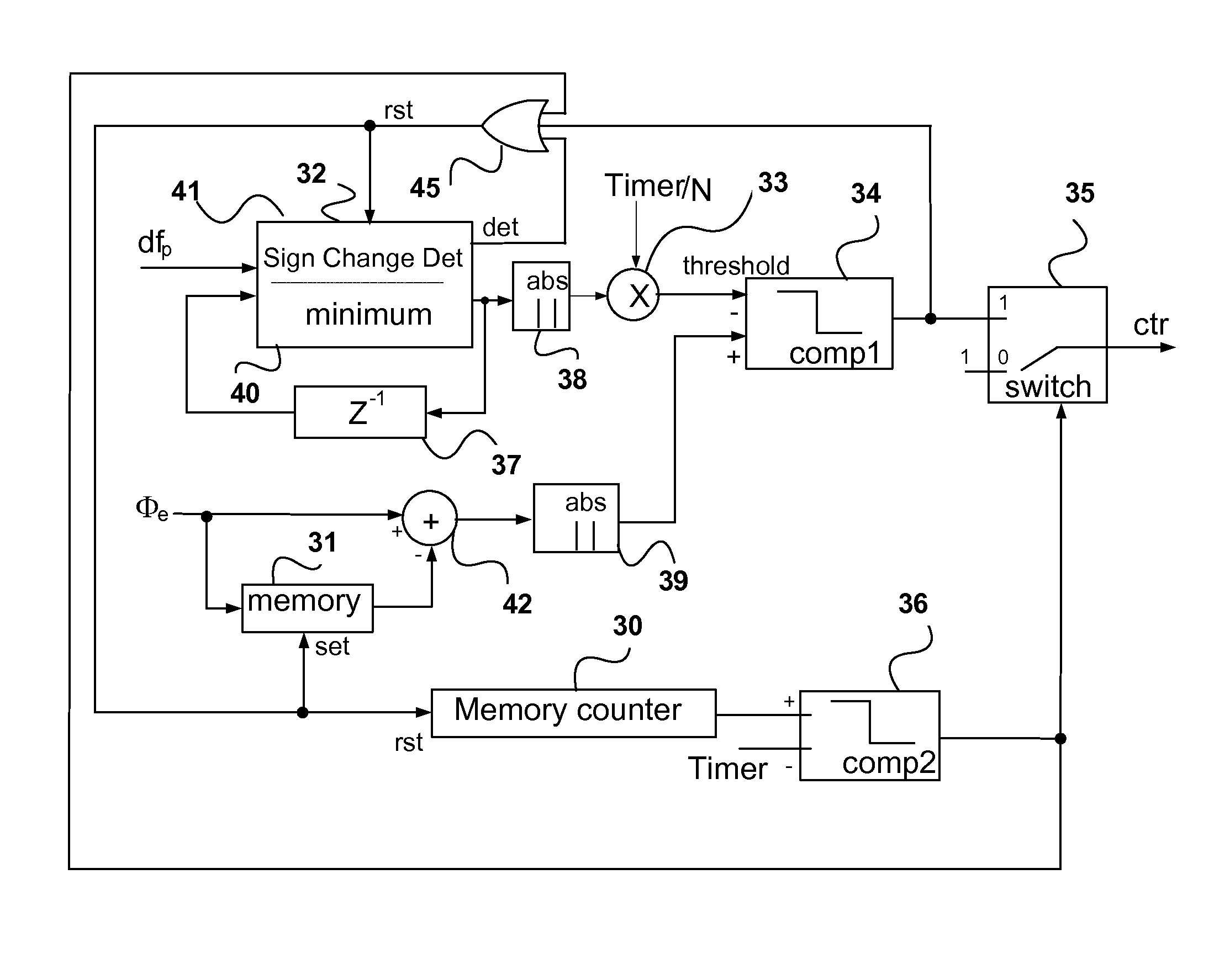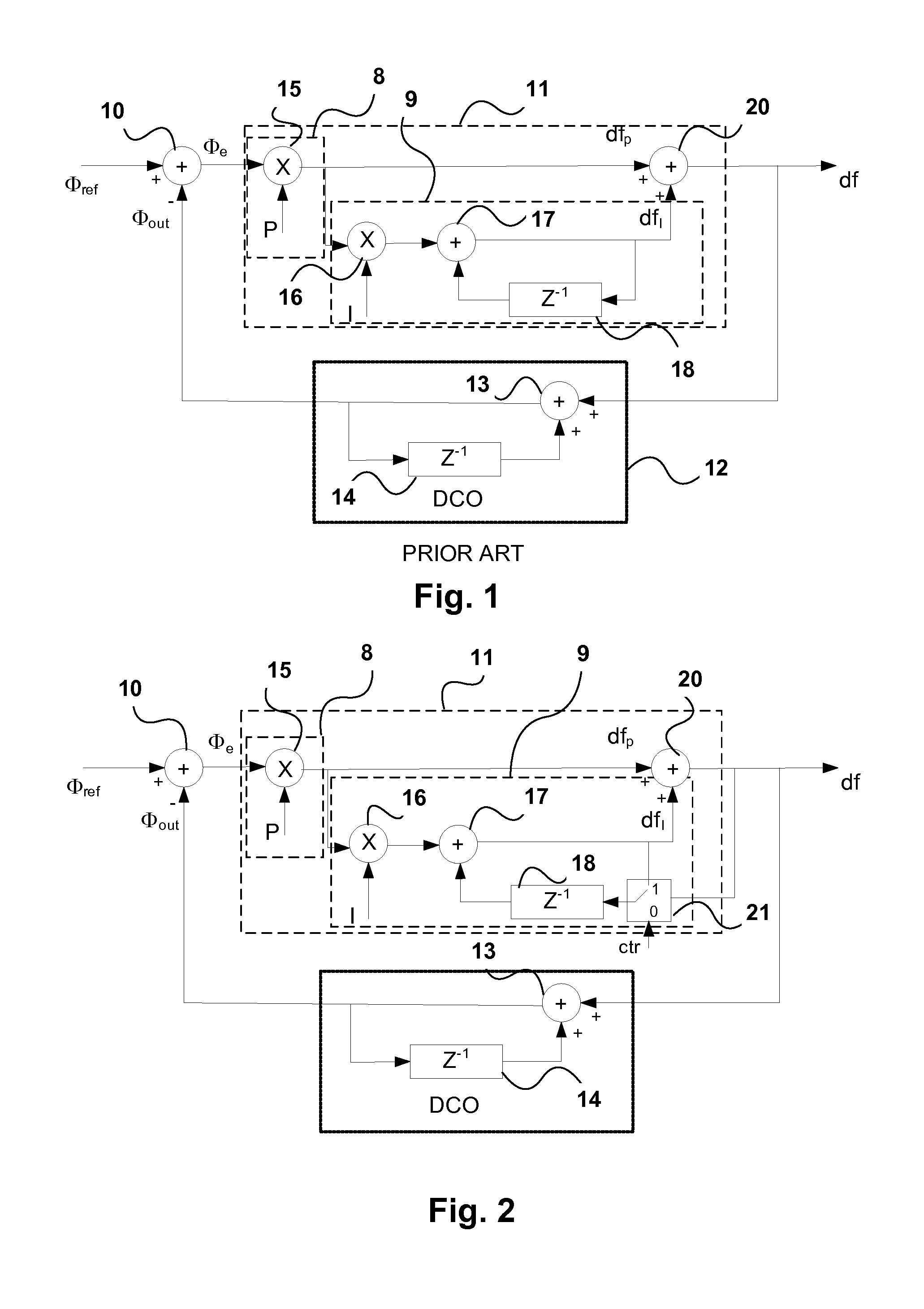Digital phase locked loop with reduced convergence time
a digital phase and convergence time technology, applied in the field of phase locked loops, can solve problems such as unacceptably long time, and achieve the effects of reducing the convergence time, speeding up the remaining phase convergence of the dpll, and low loop bandwidth
- Summary
- Abstract
- Description
- Claims
- Application Information
AI Technical Summary
Benefits of technology
Problems solved by technology
Method used
Image
Examples
Embodiment Construction
[0024]In a traditional DPLL architecture as shown in FIG. 1, the filter response H(z) is given by the expression:
[0025]H(z)=P+I-PZ-11+P+I-(2+P)Z-1+Z-2
where P and I are the scaling factors for the proportional and integral parts respectively. When I<<P, the frequency response becomes a first order system
[0026]H(z)=P1+P-Z-1
[0027]The DPLL bandwidth is determined by the pole, which is only related to the value of the scaling factor P. However, the DPLL behavior changes when the control signal df=(dfp+dfI) equals or is close to zero ppm (parts per million), but Φe is a non-zero value. In this case, if df=0, and therefore dfp+dfI=0. If Φe is non-zero, dfI must have a small frequency offset dfI=−dfp=−P*Φe so that the sum dfp+dfI=df=0. It will be appreciated that the reference frequency itself can have a small offset relative to its nominal value. In this case when the output frequency is locked relative to the actual reference frequency, i.e. has zero ppm offset relative to the actual ...
PUM
 Login to View More
Login to View More Abstract
Description
Claims
Application Information
 Login to View More
Login to View More - R&D
- Intellectual Property
- Life Sciences
- Materials
- Tech Scout
- Unparalleled Data Quality
- Higher Quality Content
- 60% Fewer Hallucinations
Browse by: Latest US Patents, China's latest patents, Technical Efficacy Thesaurus, Application Domain, Technology Topic, Popular Technical Reports.
© 2025 PatSnap. All rights reserved.Legal|Privacy policy|Modern Slavery Act Transparency Statement|Sitemap|About US| Contact US: help@patsnap.com



